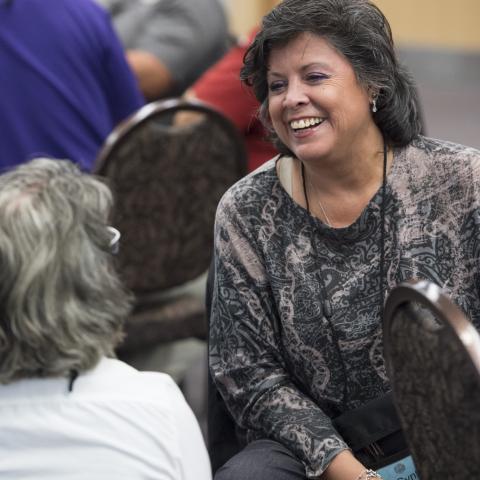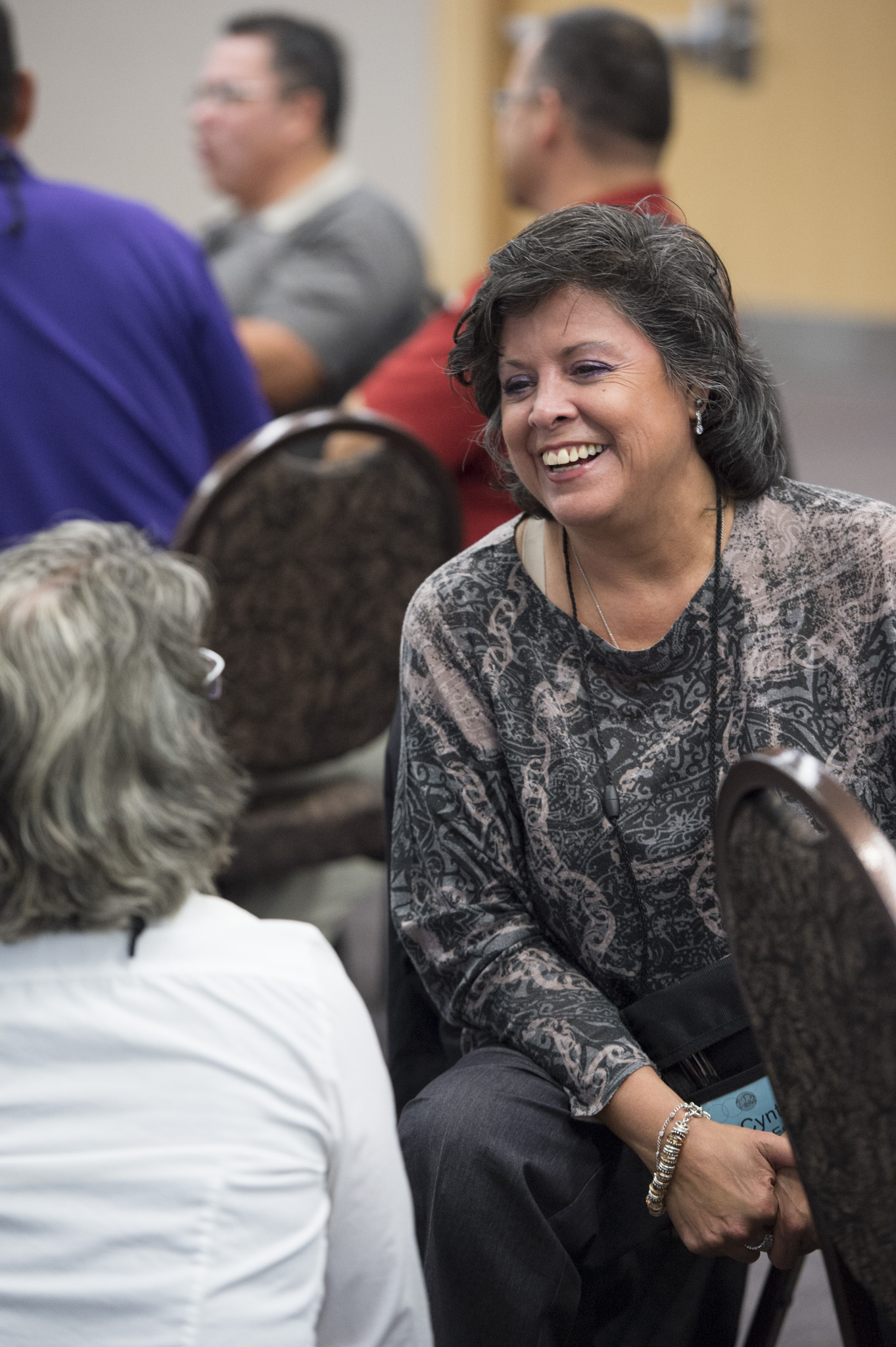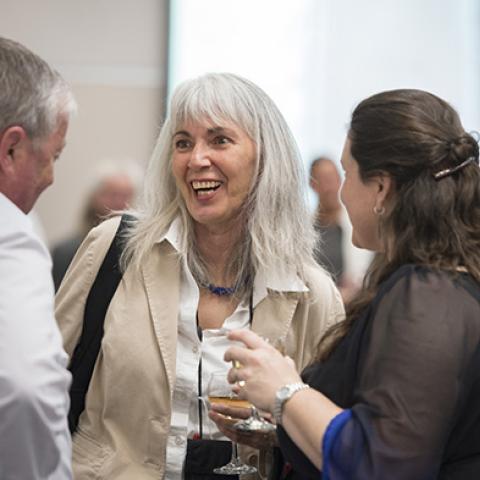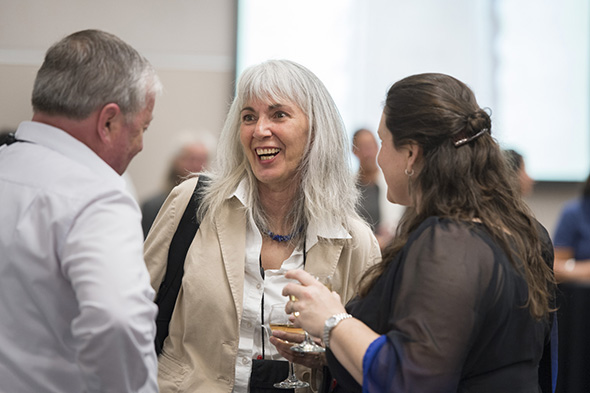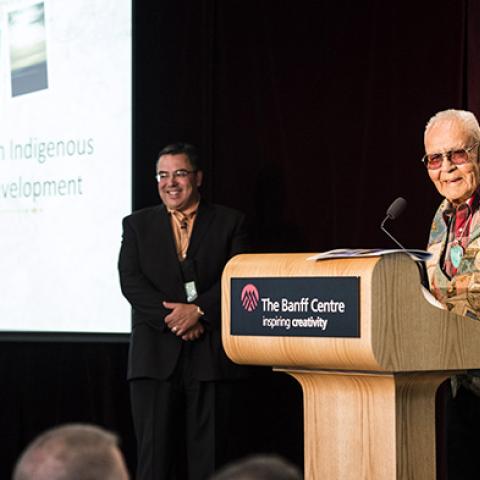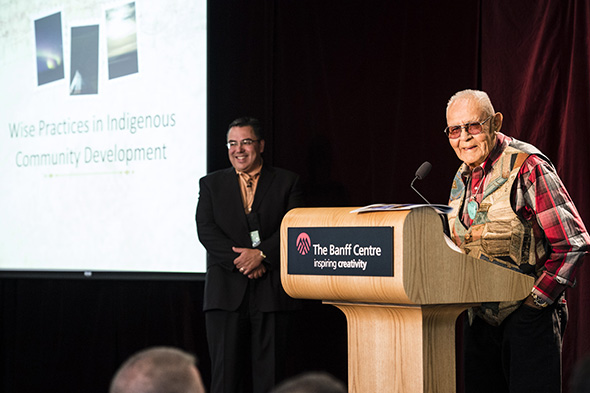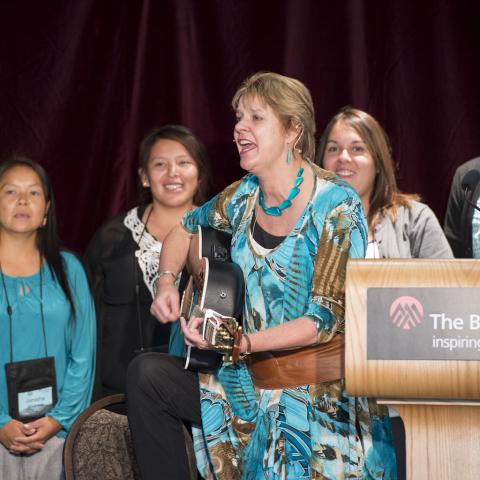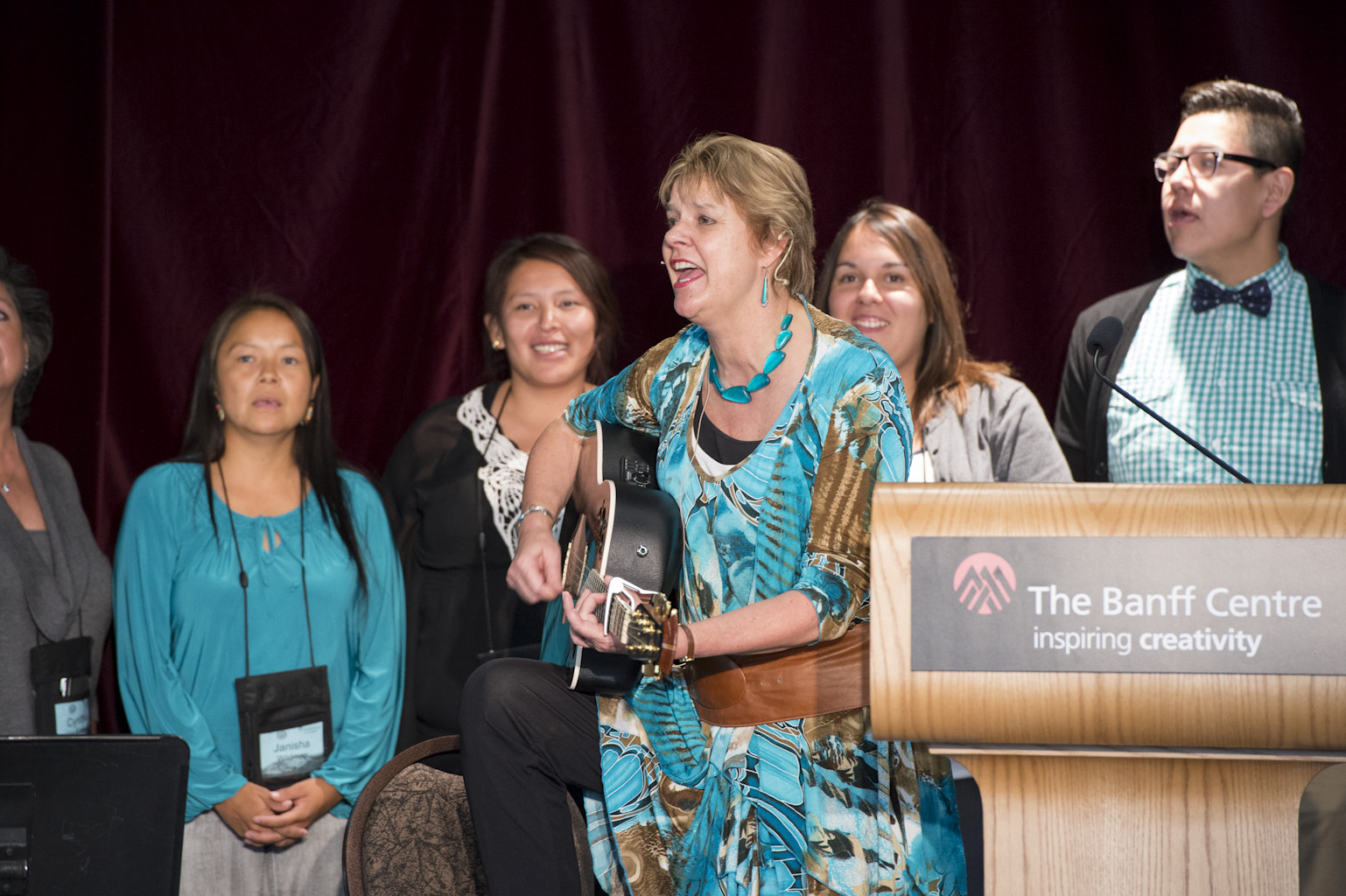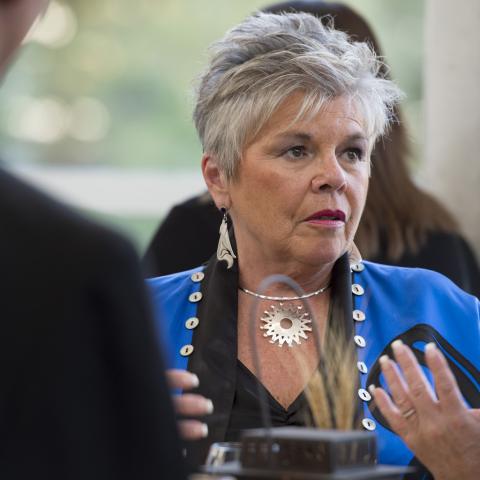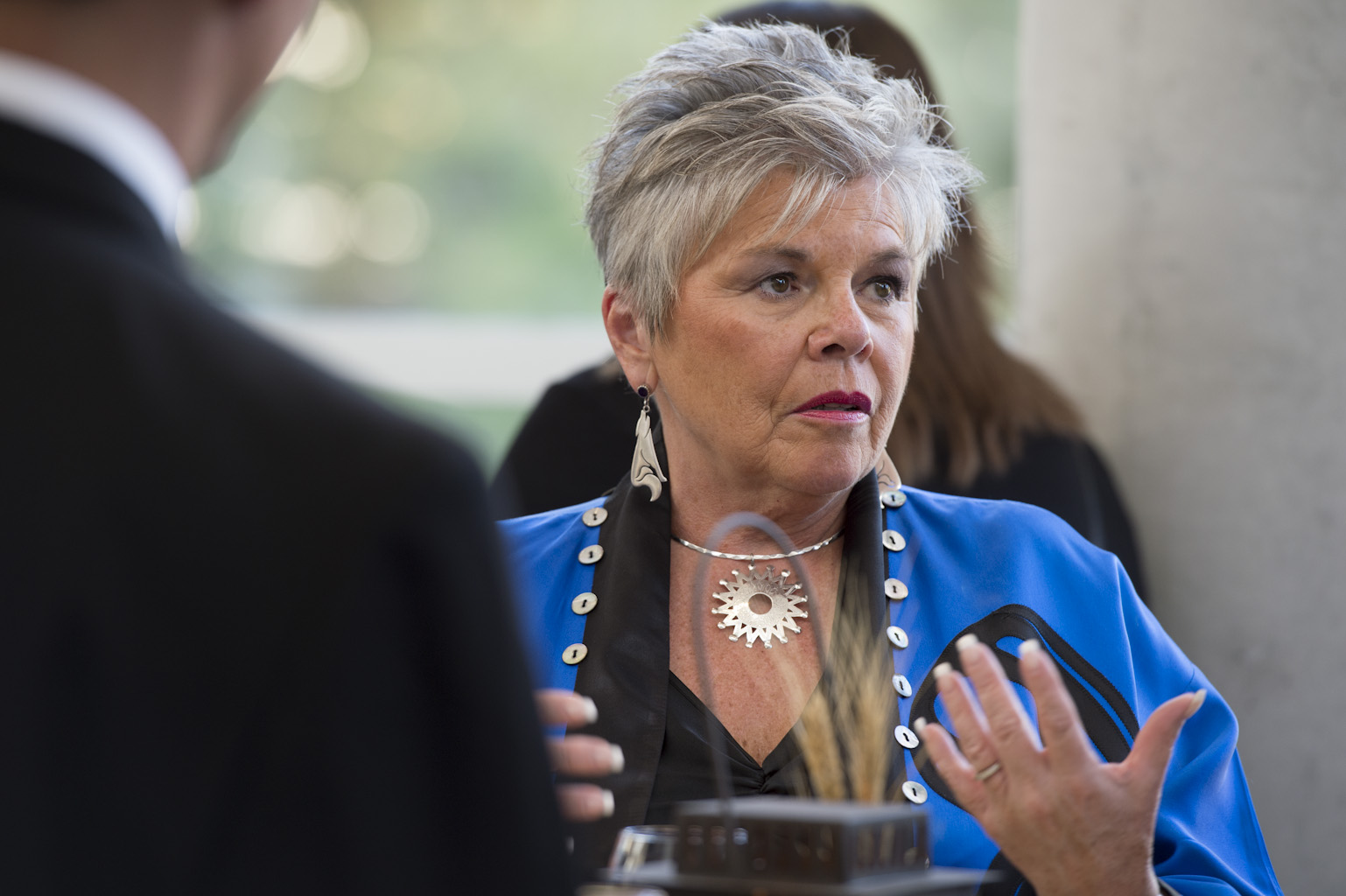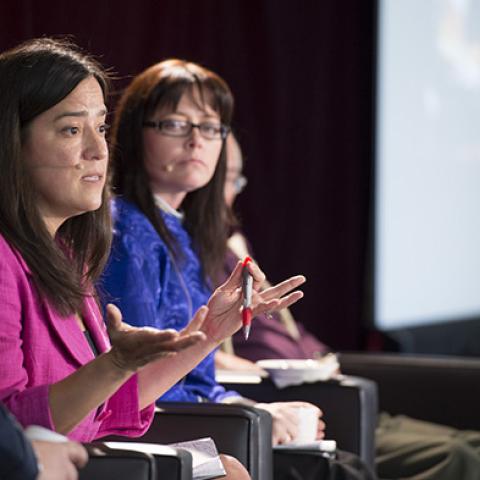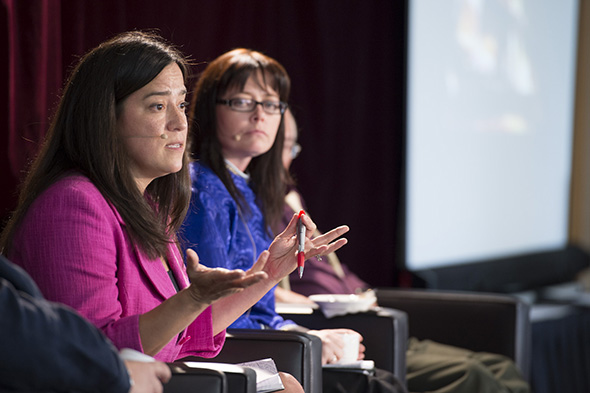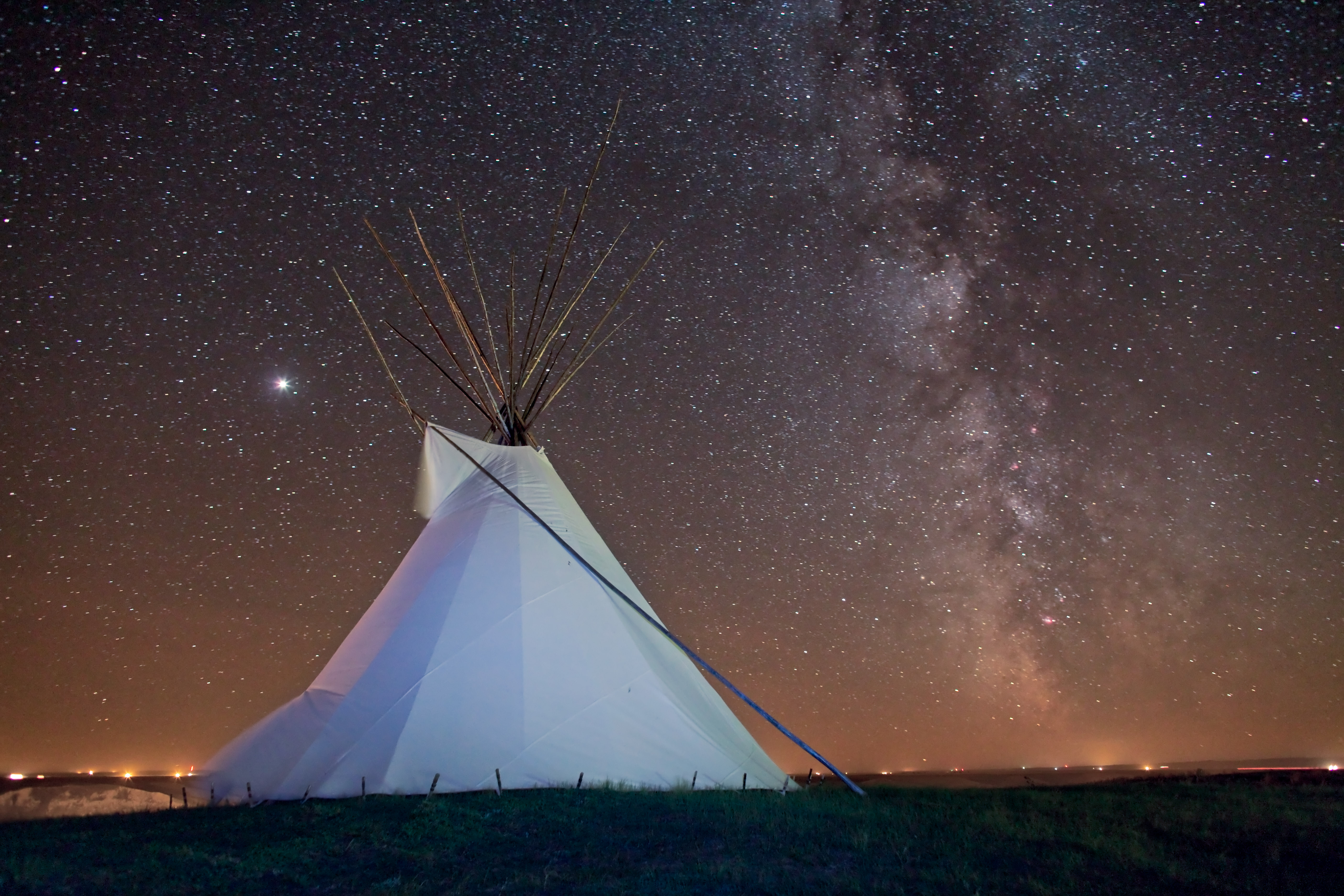
Siksika Tipi and Milky Way
The Wise Practices in Indigenous Community Development Symposium at Banff Centre in September 2012 presented stories of successful Indigenous community development. Participants learned first-hand from community members who engaged their people, developed sustainable enterprises, and who shared in the pride that comes from positive endeavours. The two-day symposium brought together Indigenous community leaders from Alberta, throughout Canada, and beyond. The symposium included keynote speakers, panel presentations, and special events that examined the wise practices of a variety of Indigenous communities, and explored how such knowledge can be applied by Indigenous leaders to develop their own communities.
The symposium was the culmination of a two-and-a-half year research project focused on wise practices in four Alberta Aboriginal communities. With generous support from the Rural Alberta Development Fund and Nexen Inc., Indigenous Leadership and Management at Banff Centre engaged in this research initiative to provide rural Alberta communities and leaders with learning, skill development, and tools for a business approach to successful self-governance and sustainable community development.
The "Best Practices in Rural Alberta Project" builds on the Harvard Project on American Indian Economic Development, and is the first project in Canada to provide tools for a systematic approach to understanding the critical success factors among best practices in Alberta's rural Aboriginal communities. We are pleased to share knowledge from this symposium, and other applied research projects, as a resource to help other Indigenous communities create their own success stories. The next success story could be yours.
Case studies
Mikisew Group of Companies
Mikisew Group of Companies, based in Fort Chipewyan consists of nine companies: Mikisew Energy Services, Mikisew Industrial Supplies Ltd., Mikisew Sport Fishing, Super 8 Fort McMurray, Fort Petroleum Limited Partnership, Mikisew Fleet Maintenance, M2 Limited, Wave Transportation & Logistics, and Mikisew Property Development. The entire First Nation benefits from the Mikisew Group of Companies, with profits shared by all Mikisew members. Beyond profit sharing, their companies support their community as a whole. Mikisew Group provides assistance to programs and services within their First Nation, from sport and wellness and education, to the celebration of their culture, history and First Nation pride.
Alberta Indian Investment Corporation
Alberta Indian Investment Corporation (AIIC) is a First Nation-owned investment company, which provides a range of services to First Nation businesses, including the provision of business loans and business development assistance. AIIC aims to be the lending institution that ensures existing and potential First Nation entrepreneurs have access to the capital they need. Aside from investing in First Nations businesses, AIIC also owns a hotel and restaurant in Edmonton.
Blackfoot Crossing Historical Park
Blackfoot Crossing Historical Park is a world-renowned cultural, educational and entertainment centre built for the promotion and preservation of the Siksika Nation Peoples' language, culture and traditions. Located 100 km east of Calgary on the Siksika Nation, Blackfoot Crossing is the site of the signing of Treaty No. 7 in 1877, and is a designated National Heritage Site.
Métis Crossing
Métis Crossing is a cultural village near Smoky Lake, Alberta set on the site where Methodist Minister George McDougall established a mission in 1862. When a Hudson's Bay Company trading post was constructed there, many English-speaking Métis from Manitoba arrived, farming began, and the fur trade thrived. Over the years, this Métis settlement became a permanent river lot community. Métis Crossing is open from May long weekend to Labour Day, and hosts a variety of cultural events and activities.
Other Symposium Groups
The 5th Community
A fifth Aboriginal community is also involved in the wise practices research project. Representatives from Sucker Creek First Nation are exploring the potential impact of what has been learned, in order to apply the best practices back in their community. This community has not been a subject of the research, but has taken part in the learning journey as an observer, much like the youth cohort.
The Youth Cohort
A group of 15 Indigenous youth from across Alberta have taken part in the wise practices research project as a learning journey. Assisting with research where possible, the youth have also brought 'gifts' of knowledge and inspiration back to their respective communities. The youth were split into four groups, each assigned to one of the four specific research project sites. "This was a chance to listen to other growing First Nations community businesses, and learn how they have become successful," said youth cohort member Janisha Wildman, a member of the Stoney Nakoda and Samson Cree First Nations in Alberta.
Symposium Presentations
A wide-ranging group of researchers, practitioners, and speakers presented stories of wisdom, hope, dreams, hard work, and success in a variety of sectors of Indigenous communities around the world. Here are some of their inspiring stories.
- The Purdy Crawford Chair in Aboriginal Business Studies - Allen MacKenzie
- Understanding how Indigenous community factors affect Indigenous entrepreneurial process - Bob Kayseas
- Overview of the Master of Northern Governance and Development (MNGD) program - Bonita Beatty
- Governance and Administration - Chief Jody Wilson Raybould
- St. Eugene Golf Resort Casino: A First Nation Partnership Success Story - Chief Sharon Stinson Henry
- Onion Lake Cree Nation: Treaty Six First Nations Gathering - Chief Wallace Fox
- Onion Lake Cree Nation Integrated Cree Governance - Chief Wallace Fox
- Indigenous Leadership Development in the United States - Chris Wetzel
- Aboriginal Leadership Development in Australia - Dennis Foley
- Mapping Indigenous Arts Leadership in Canada - France Trepanier
- Tribal Councils Investment Group of Manitoba Ltd. - Frank Turner
- Governance and Administration - Harold Calla
- Deep Listening in Action - Laura Brearley
- Indigenous Business and Economic Development in the US - Miriam Jorgensen
- VACFSS: A Story of Success Through Wise Practices - Paul Hucul
- Community Development and Capacity Building - Rhonda Laboucan
- The Ch'inook Initiative - Rick Colbourne
- Creating Indigenous Economies and Sustainable Communities - Robert Miller
- Leadership and Management Program, Blue Quills First Nations College - Sherri Chisan
- Social change leadership for collective impact: Lessons from the US - Sonia Ospina
- West Bank First Nation - Tim Raybould
Wise Practices Toolkit
Aboriginal Affairs and Northern Development Canada, Comprehensive Community Planning for First Nations in British Columbia Handbook
This handbook breaks down community planning into manageable stages for BC communities ready to tackle the planning process. It includes practical tools to encourage community involvement and develop the plan based on community vision and goals.
Aboriginal Centre for Excellence (ACE)
A library of plans and studies in a range of key areas, including sample community and economic development plans, feasibility and marketing studies, work and business plans, templates, guides, and other useful resources.
Alberta Enterprise and Advanced Education
Tools and training programs to learn more about techniques of business attraction and retention, and economic development.
Alberta Rural Development Network
Links to toolkits that can help you and your community with rural development.
British Columbia Assembly of First Nations Governance Toolkit
A detailed guide to nation building.
Ch'nook
Useful Indigenous business resource reports, resources, studies, and toolkits.
The Community Tool Box
The Community Tool Box is a service of the Work Group for Community Health and Development at the University of Kansas. It contains practical information for community building that both professionals and ordinary citizens can use in everyday practice.
Indigenous Leadership and Management Strategic Planning Guidebook
Institutional Learning and Change Initiative (ILAC)
Includes publications, lists of tools/methods for evaluation, video interviews, virtual library (topics included are evaluation, collaborative research and impact assessment).
National Centre for First Nations Governance
Includes 24 best practice examples, over 100 supporting documents.
Native Nations Institute
A searchable database on areas of interest around governance and best practices for Indigenous people.
Native Women's Association of Canada
Reports on issues of interest to Aboriginal women.
Rural Alberta Development Fund
An overview of the Best Practices in Rural Alberta Project: Nexen Chair in Aboriginal Leadership project.
Rural Women Making Change (RWMC): Asset Mapping Handbook
This handbook, from the National Rural Conference 2002, describes asset mapping, which can be used as a starting place for initiatives such as community development, strategic planning, and organizational development.
A Literature Review and Wise Practices Approach
Aboriginal leaders and managers need the same leadership development training as others. However, Aboriginal cultures have unique issues that are very different from non-Aboriginal leaders. Read Best Practices in Aboriginal Community Development: A Literature Review and Wise Practices Approach, by Cynthia Wesley-Esquimaux and Brian Calliou for a final report of the Wise Practices in Indigenous Community Development project.
